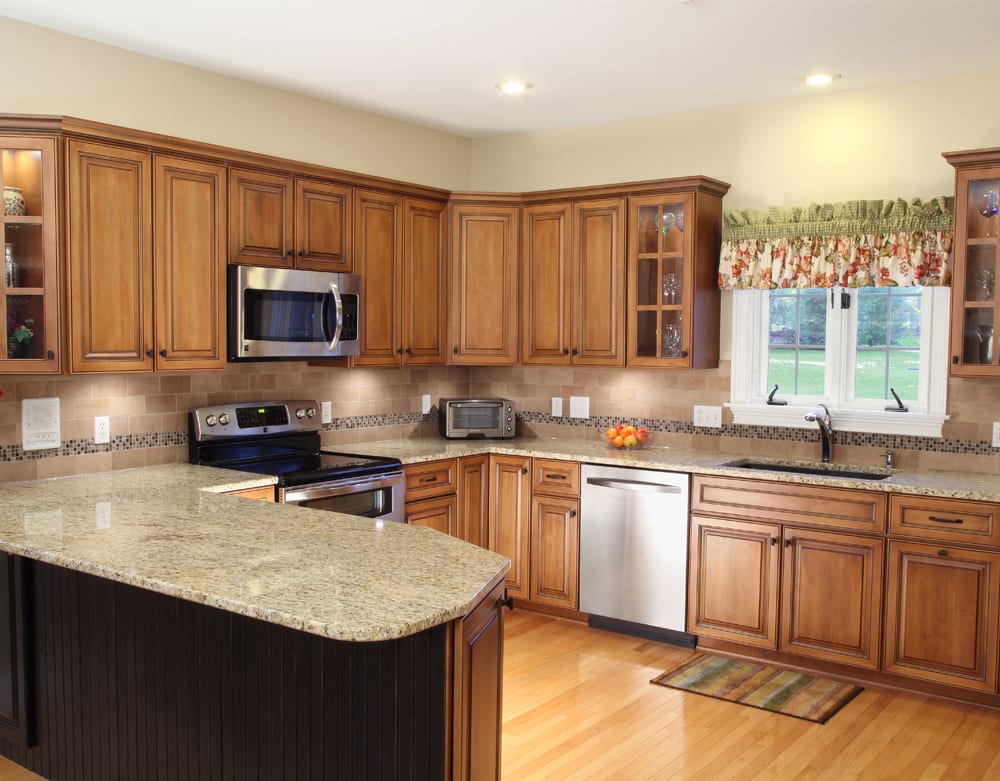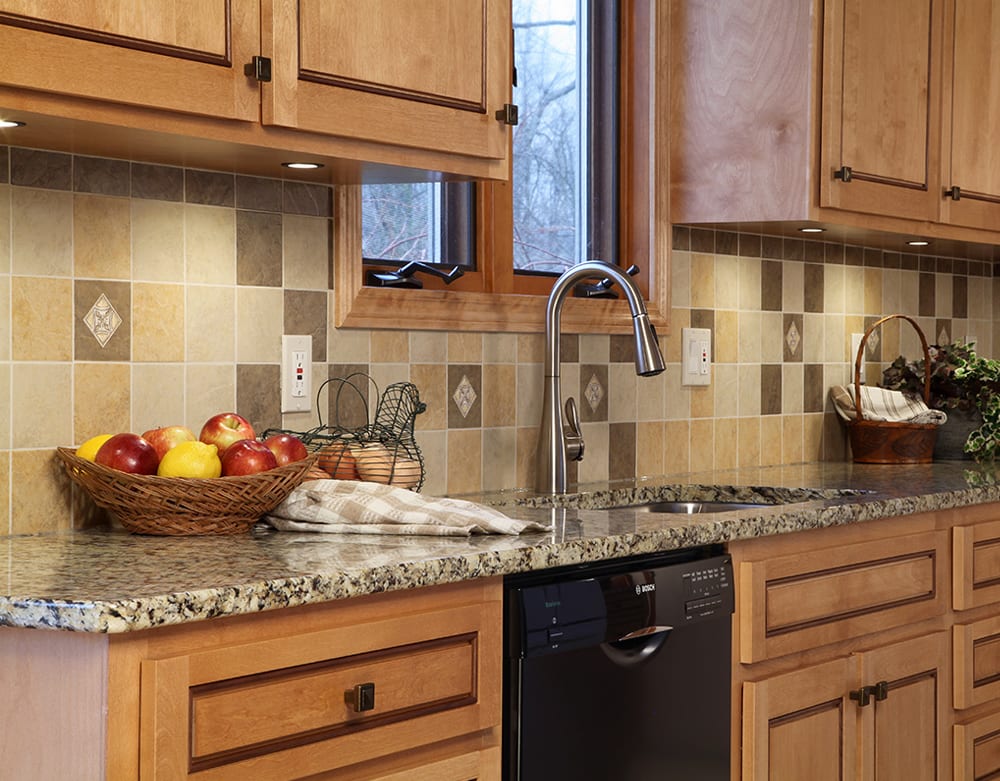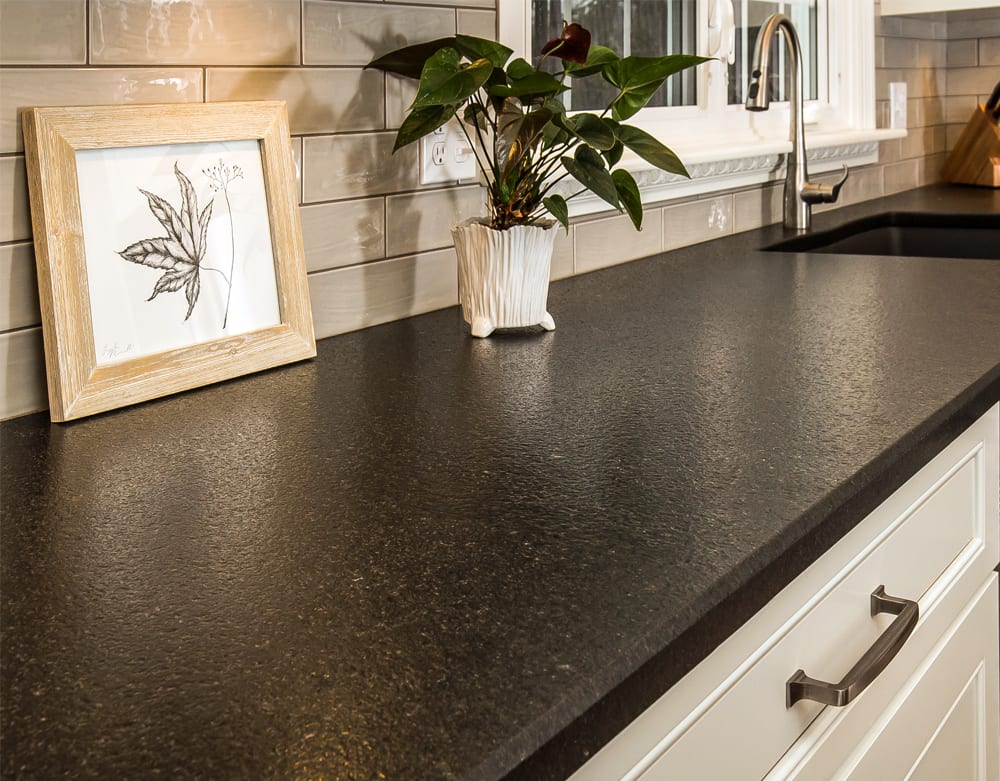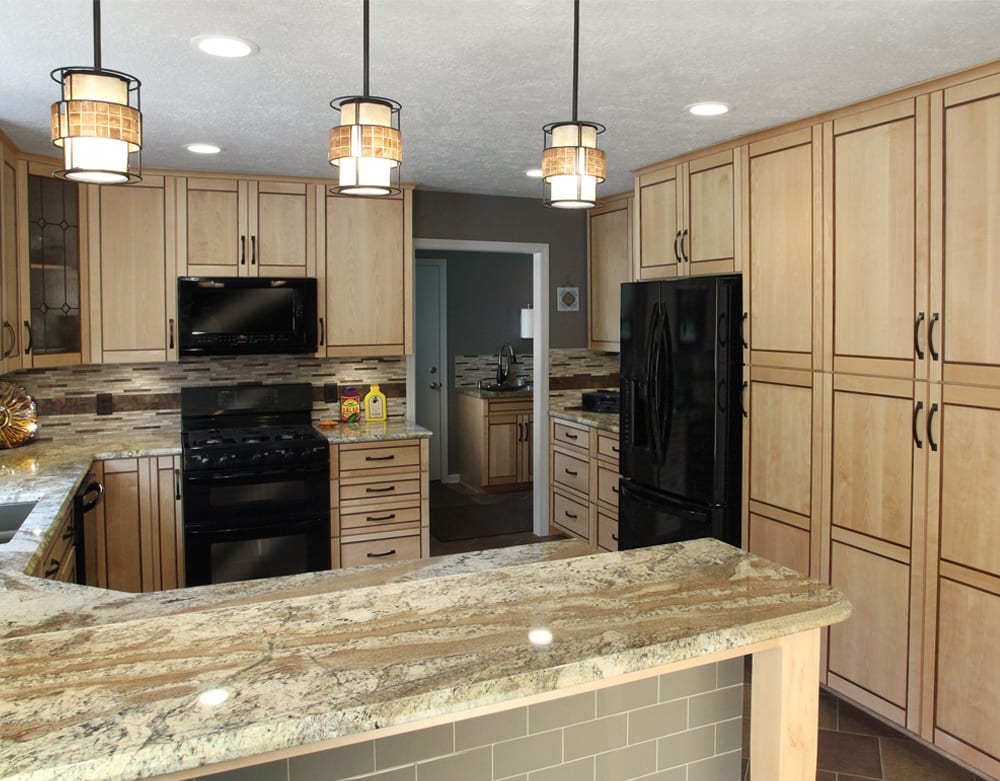
Granite Shown: Giallo Ornamental
When thinking about premium kitchen countertops, granite is one of the most popular natural stone materials that pop into people’s minds. It’s highly durable, with a timeless beauty that matches any interior design, whether you’re working with a modern kitchen or a rustic home.
That said, not all granite is equal; some have characteristics that will affect your experience with it. These differences make understanding granite quality and grades crucial when purchasing a slab. From thickness and porosity to color and polish, this granite slab selection guide will teach you how to choose granite countertops to make the best choice for your kitchen!
What Determines Granite Grades and Quality?
There are different grades of granite, each with qualities that give it its assigned rating. Let’s outline these factors to help you understand the best-quality granite for kitchens.
Thickness & Durability

High-grade granite is around 1 to 1¼ inches thick. Thicker slabs are stronger and more durable, enabling them to last longer despite bearing excessive weight or enduring high heat.
On the other hand, low- and mid-grade granite is only ¾ inch thick. They will require extra support to endure the beatings that countertops regularly endure, even more so if you plan on resting heavy kitchen equipment on top.
Country of Origin & Its Impact
The granite material’s country of origin also plays a crucial part in granite quality and grade. Granite sourced from Spain, India, Brazil, and Italy is ideal. It has exceptional strength and durability, with unique shades and colors many consider rare. Commercial-grade granite from other regions typically possesses more imperfections, making it less valuable in the market.
Porosity & Absorption Rate
You want your granite countertops to be smooth and impermeable. Otherwise, they’ll absorb the liquids and food particles they come into contact with, manifesting as stains and dulling over time. Smooth, nonporous granite is generally high-grade.
A popular way to test a granite slab’s absorption rate is with a “lemon test”—get a small granite sample and drop lemon juice onto it. If its surface turns immediately dark, you’re dealing with a highly absorbent piece of granite. A smooth piece should take at least 30 seconds to absorb the lemon juice and darken.
Choosing the Right Granite Slab for Your Kitchen
Common vs. Rare Colors

Visual appearance considerably impacts its cost. Those with a blue, red, or purple tint are generally rarer and more valuable, while neutral tones like tan, black, and beige are more common and budget-friendly.
At the same time, some hues are more durable granite slabs than others. Red, black, and brown-tinted granite tend to be harder and more resistant to scratches and chipping than others.
Edge Profiles & Finishing Touches
Besides making your countertop look good, a granite’s edge demonstrates how durable it is to withstand carving by heavy machinery. The most common edge profile classifications include:
- Basic: As a more affordable option, it includes simple edges like a standard straight or bevel.
- Premium: This mid-range category covers more complicated edges, such as bullnoses and double bevels.
- Custom: These options require more complex cutting and have a hefty price tag. They include waterfalls, ogees, and dupont.
Low-quality granite is fragile—it can’t withstand granite edging processes without chipping. If the granite you’re looking at has poorly executed laminated edges, chances are it’s low-grade.
The Importance of a Quality Polish
A high-grade granite countertop must possess a top-quality polish. It should have a smooth, uniform finish without visible cloudiness or scratches that would be otherwise common in low-grade options. Furthermore, examine the granite’s bottom—a polished underside signifies high-end craftsmanship that justifies an equally high premium.
Ensuring Longevity: Sealing & Maintenance

While higher-quality granite is durable and lasts long, it still collects grime, dust, and stains over time. As such, you must keep up with maintenance to prolong its lifespan. Proper resealing will reduce porosity and keep stains at bay, allowing you to enjoy a smooth, blemish-free granite countertop for longer.
The process involves wiping a sealer throughout the countertop and leaving it to cure. That said, the amount of sealing substance used varies depending on your granite type and how much you use it.
Takeaway
Granite pieces might look all the same at first glance, but each piece greatly varies in thickness, porosity, color, and polish. This makes the ability to distinguish between granite quality and grades a must-have skill. It’ll help you invest in a durable and visually stunning countertop that lasts decades—or more.
Need a hand? American Wood Reface installs top-quality countertops to elevate your kitchen and make food preparation fun and engaging for everyone at home. Request a free consultation with us today!
